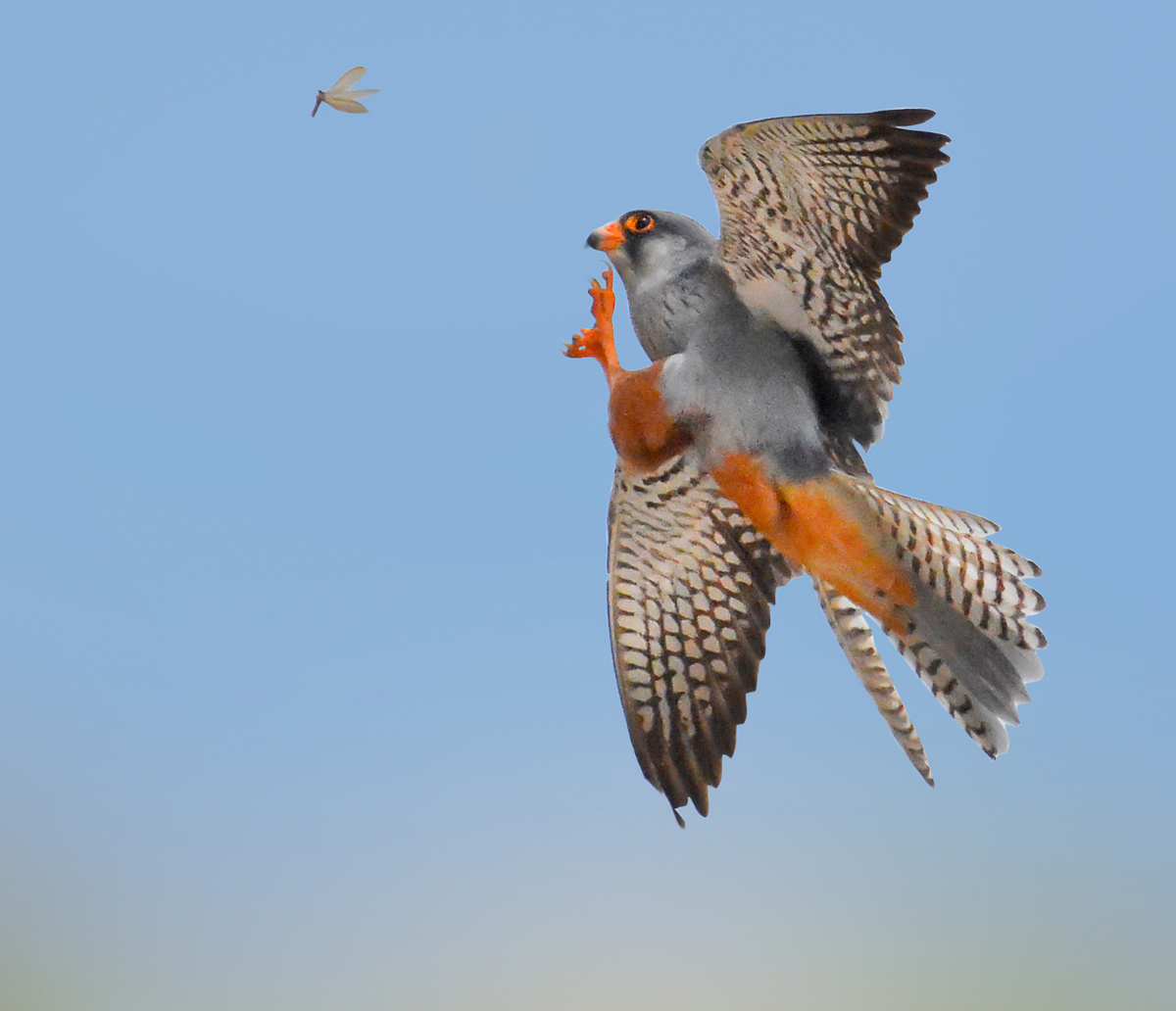Follow the termites: feeding frenzy in india for africa-bound falcons
- Select a language for the TTS:
- UK English Female
- UK English Male
- US English Female
- US English Male
- Australian Female
- Australian Male
- Language selected: (auto detect) - EN

Play all audios:

In a feeding frenzy that prepares them for a 3,500 km (2,000 mile) flight over the Arabian Sea, a million Amur falcons (_Falco amurensis_) can consume two billion termites in just over a
fortnight during their pit stop in the eastern Himalayas of northeast India. “They stop here to fuel up on protein- and fat-rich termites, as well as to rest,” says Suresh Kumar, co-author
of a recent study1 on the feeding habits of the small birds of prey that endure a staggering 22,000 km trip every year, travelling between their breeding sites in south-east Russia and
northern China and wintering grounds in warmer climates of the African continent. The falcons are the world’s longest flying raptor, and India, as a signatory of the Convention of Migratory
Species, must protect them. They skirt the Himalayas before their non-stop flight over the Arabian Sea to east and southern Africa. Over the past decade the falcon has become a beacon for
regional conservation efforts with local communities in Nagaland and adjoining states of Manipur and Assam in the northeast setting aside community-owned lands to protect the species and
overall biodiversity. Local hunters used to target falcons towards the end of their stopover season because of the fat they would amass by then. This has now been banned. Kumar’s team’s
findings underline the significance of these major stopover sites in the Amur falcon’s annual migration. “Our conclusion could help prioritise these critical sites for conservation,” says
Kumar. He explains that if the falcons were waiting for ideal weather conditions to make their final oceanic journey, they would be stopping over in the Western Ghats around the Arabian Sea.
However, they are departing directly from northeast India and flying straight to Somalia. Acting on knowledge informed by data points of large roosting sites from satellite-tagged falcons,
Kumar and biologists at the Dehradun-based Wildlife Institute of India (WII) analysed 1,200 regurgitated pellets — composed of indigestible prey remains — collected at these roost sites in
Pangti, Yaongyimchen, Hakhizhe in Nagaland during October and November of 2017 and 2018. The pellets revealed a high proportion of two species of fungus-growing subterranean termites,
_Odontotermes feae_ and _Odontotermes horni_. “Nearly 95% of their diet during their northeast India pitstop is termites and we spent a lot of time tracing the termite remains to the species
level,” says Kumar. According to Daniel Mize, a biologist at the Rajiv Gandhi University, in Arunachal Pradesh, the interaction between the insects and the Amur falcon is a natural
population control mechanism, preventing insect populations from exploding that could lead to widespread devastation for vegetation and crops. The WII researchers noted the falcons’ foraging
perfectly timed with the emergence of the termites from their underground homes in the early evening. As termites swarm, the raptors leave their roosts, and mill over the area, eventually
swooping to feast. “The termites dictate what they will be doing and we want to figure out how they shape the birds’ schedule,” says Kumar. These termites venture out during the lull between
the southwest monsoon and the northeast monsoon, avoiding heavy rainfall to protect colonies from becoming waterlogged, he says. TRACKING THE MIGRATION ROUTE Among the million falcons that
the team observed in 2017 and 2018 in the major stopover sites, was Longleng, one of the 15 birds that the WII team, in partnership with the Nagaland and Manipur state forest departments and
community members, satellite-tagged to track transcontinental travel. She and others provided thousands of location data points that helped map the sheer scale of their migration,
generating excitement and awareness among communities who would then alert the scientists about additional large colonies. As public engagement around the raptors gained momentum,
communities in Nagaland resolved to stop hunting the birds, which had continued despite a national ban. This summer, birdwatchers in Gujarat along India's west coast counted the falcons
during their return to the breeding grounds. Recently, Mize and colleagues confirmed repeated sightings2 of the birds in grassland-rich D'Ering Memorial Wildlife Sanctuary (DEMWS) in
Arunachal Pradesh in summer. They say the protected area in northeast India, with a variety of insects for food, could be a safe pitstop for the birds on their return to the breeding grounds
in China and Russia. Mize says the river through the sanctuary is in full flow at that time, making access difficult for potential hunters. However, it is important to raise awareness among
the local community around the sanctuary about the birds, especially if their stopover area extends beyond the protected area boundaries, he says. The researchers suggest monitoring how the
birds are responding to climate change in the wake of plummeting insect populations.